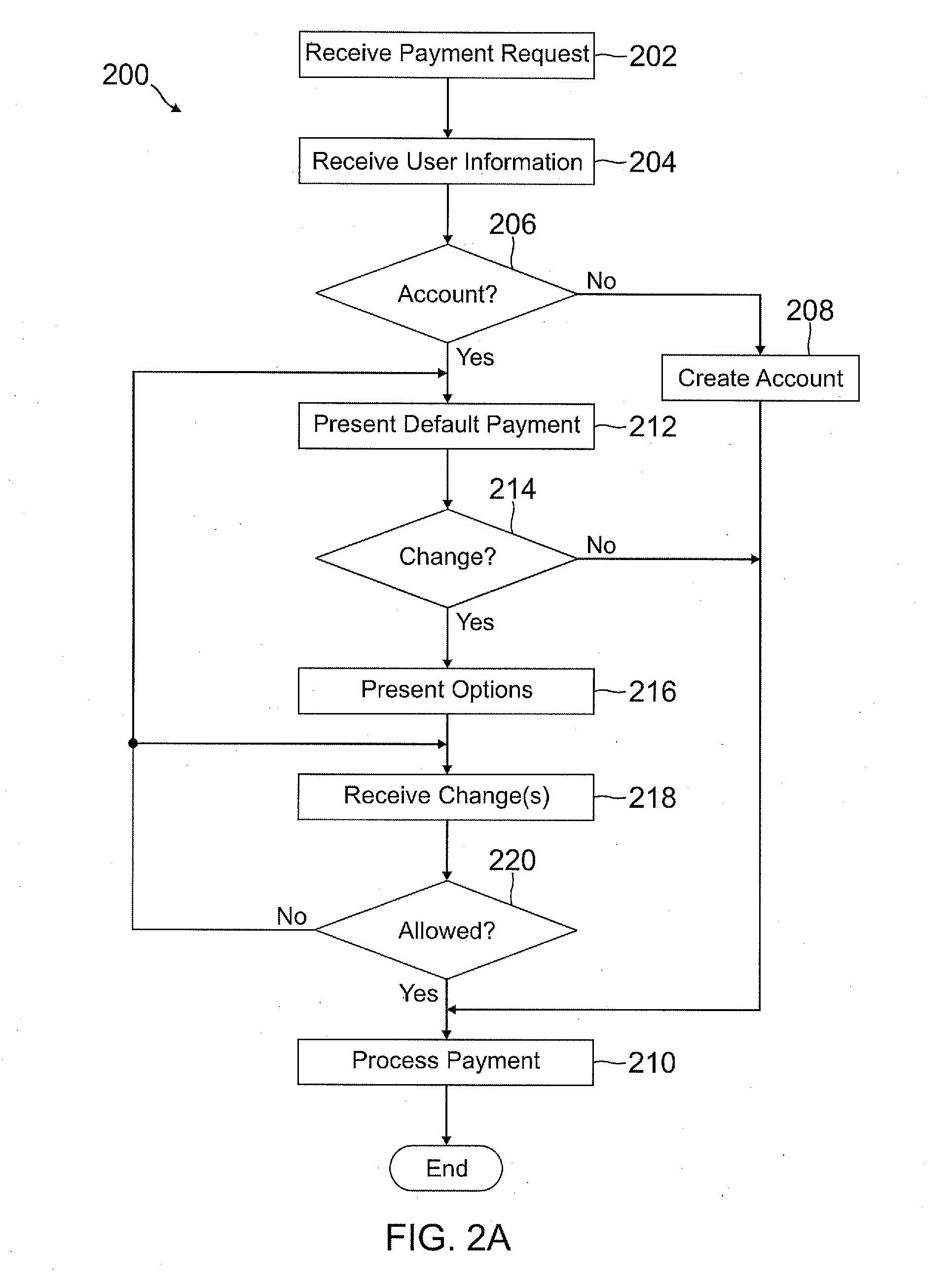Deferred payment and selective funding and payments
a technology of deferred payment and selective funding, applied in the field of electronic payments, can solve the problems of forgetting or foregoing the purchase altogether, strict and inflexible terms, fees, and payment schedules, and typical payment products do not give the consumer much flexibility regarding payment terms and conditions, etc., to achieve enhanced flexibility and control, small service fee, and enhanced flexibility and control.
- Summary
- Abstract
- Description
- Claims
- Application Information
AI Technical Summary
Benefits of technology
Problems solved by technology
Method used
Image
Examples
Embodiment Construction
[0027]According to different embodiments, a consumer or user may select a type of payment, payment terms, or be given credit without the consumer having to submit a social security number, before checkout, at the time of payment, and be able to change any of the selections after payment. Examples for payment options (before, at, or after purchase) may include holding off payment until a certain period after the transaction, at which time, payment is automatically debited from a consumer funding source, such as a bank, on or by a specific day, paying in installments determined by the consumer, paying the amount within a grace period, payment using one or more funding sources (e.g., credit card(s), bank, stored balance, gift card, debit card, coupons, etc.) selected by the user, etc. This gives the consumer more flexibility to make a payment using terms or products best suited for the consumer, both at the time of payment and after if desired.
[0028]Table 1 shows different non-limiting...
PUM
 Login to View More
Login to View More Abstract
Description
Claims
Application Information
 Login to View More
Login to View More - R&D
- Intellectual Property
- Life Sciences
- Materials
- Tech Scout
- Unparalleled Data Quality
- Higher Quality Content
- 60% Fewer Hallucinations
Browse by: Latest US Patents, China's latest patents, Technical Efficacy Thesaurus, Application Domain, Technology Topic, Popular Technical Reports.
© 2025 PatSnap. All rights reserved.Legal|Privacy policy|Modern Slavery Act Transparency Statement|Sitemap|About US| Contact US: help@patsnap.com



